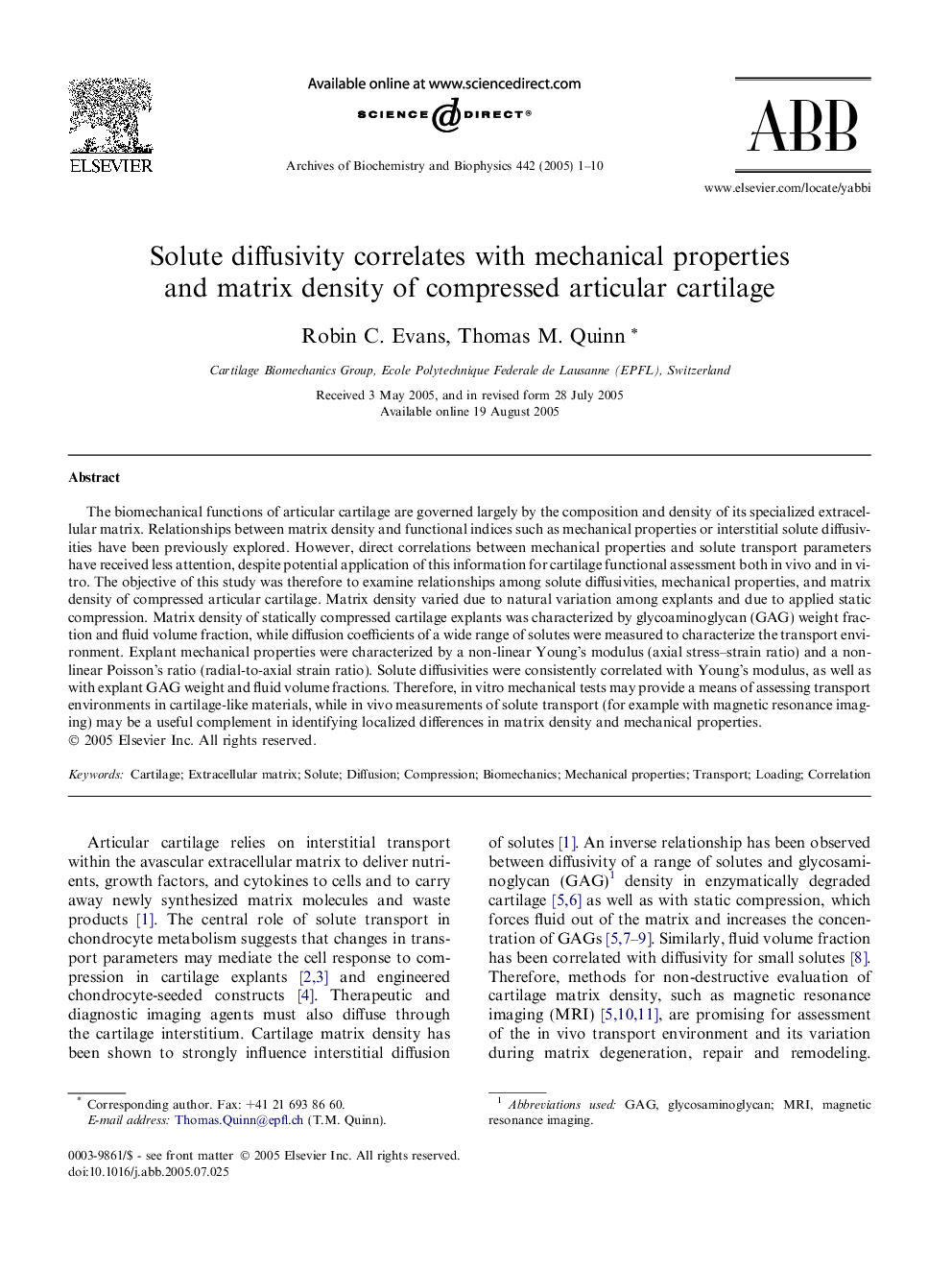| Article ID | Journal | Published Year | Pages | File Type |
|---|---|---|---|---|
| 9882104 | Archives of Biochemistry and Biophysics | 2005 | 10 Pages |
Abstract
The biomechanical functions of articular cartilage are governed largely by the composition and density of its specialized extracellular matrix. Relationships between matrix density and functional indices such as mechanical properties or interstitial solute diffusivities have been previously explored. However, direct correlations between mechanical properties and solute transport parameters have received less attention, despite potential application of this information for cartilage functional assessment both in vivo and in vitro. The objective of this study was therefore to examine relationships among solute diffusivities, mechanical properties, and matrix density of compressed articular cartilage. Matrix density varied due to natural variation among explants and due to applied static compression. Matrix density of statically compressed cartilage explants was characterized by glycoaminoglycan (GAG) weight fraction and fluid volume fraction, while diffusion coefficients of a wide range of solutes were measured to characterize the transport environment. Explant mechanical properties were characterized by a non-linear Young's modulus (axial stress-strain ratio) and a non-linear Poisson's ratio (radial-to-axial strain ratio). Solute diffusivities were consistently correlated with Young's modulus, as well as with explant GAG weight and fluid volume fractions. Therefore, in vitro mechanical tests may provide a means of assessing transport environments in cartilage-like materials, while in vivo measurements of solute transport (for example with magnetic resonance imaging) may be a useful complement in identifying localized differences in matrix density and mechanical properties.
Keywords
Related Topics
Life Sciences
Biochemistry, Genetics and Molecular Biology
Biochemistry
Authors
Robin C. Evans, Thomas M. Quinn,
